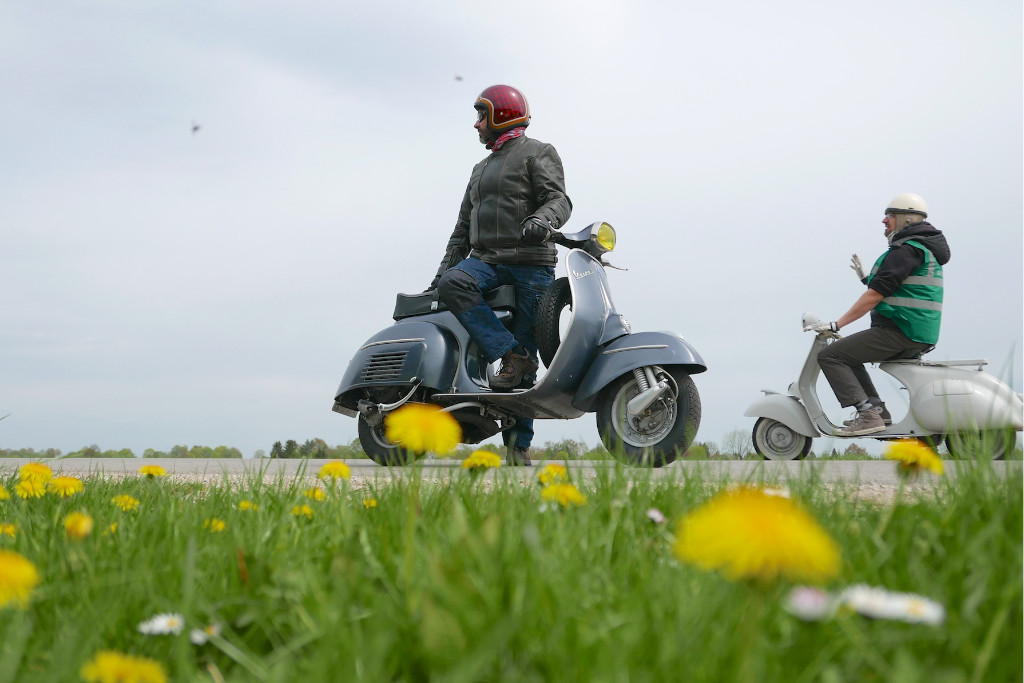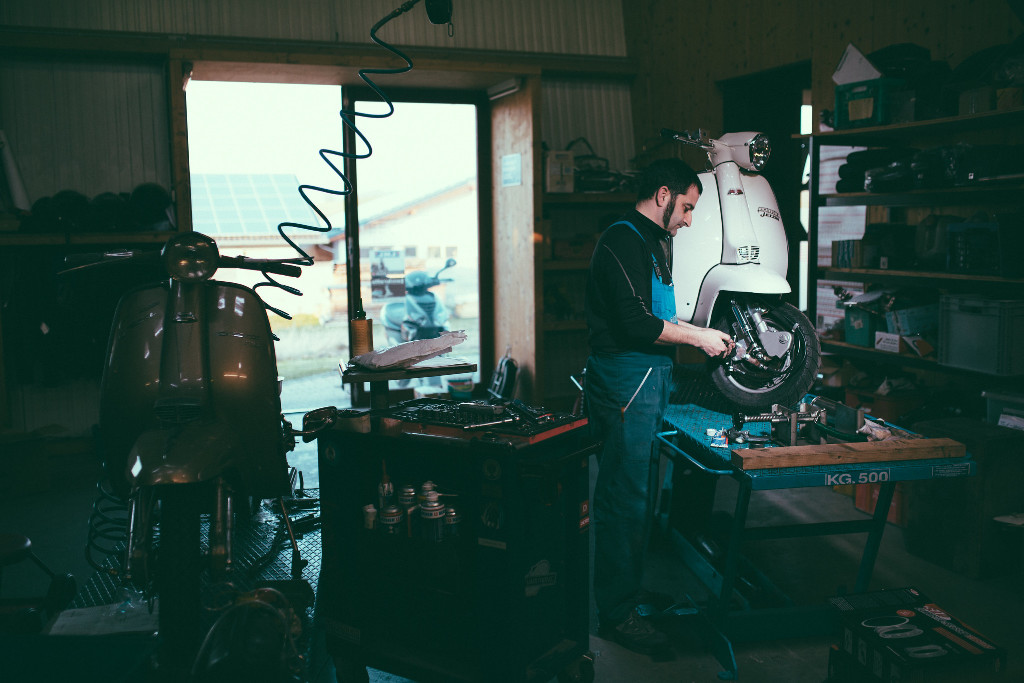Every year in spring, Vespa lovers are faced with the task of making their two-wheeler fit for use in the upcoming season. If you have a bit of technical skill and expertise, you can do the work yourself. Riders who feel unsure should leave it to a professional, who will check the most important functions in a few simple steps during a Vespa spring check and repair them if necessary.
What owners can do themselves
The preparation for the next ride begins with a thorough cleaning. This is not only for the sake of appearance. When the vehicle is cleaned down to the smallest crevice, visual defects and damage are easily noticed. Rusty spots should be repaired immediately. Rust can easily spread if it is not removed. As a result, individual components can be so severely attacked that it is necessary to replace them. Polishing agents are sufficient to remove so-called flash rust, which has merely settled on the surface of the components. In the case of stubborn infestation, it may be necessary to use sandpaper. The treated area should then be resealed with paint to prevent further rust infestation. SIP Scootershop offers all kinds of tools for rust removal and thorough cleaning of your Vespa.
The next step is to start the bike. However, this is only possible if the battery is sufficiently charged. Vespa owners basically have two options: Either they remove the battery before winter and connect it to a trickle charger. In this case, the charged battery can be mounted directly and the scooter is ready to start immediately. The second option is to leave the battery mounted throughout the winter. If the Vespa has not been used for several months, the battery has most likely discharged itself. It must be charged so that the energy is sufficient to start the engine and supply the electrical consumers. As soon as this is possible again, the functions of all lamps and the turn signals should be checked. By the way, we have a separate article here on the subject of the Vespa battery.

Last but not least, two-wheelers should pay attention to the condition of their tyres. Three factors are of great importance: the air pressure, the tread depth and the condition of the material. No general statement can be made about the air pressure, as it depends on the model. The vehicle documents provide information on the recommended values. For mopeds with a maximum engine capacity of 125 cc, a tread depth of one millimetre is sufficient to meet the legal requirements. If the tyres are close to this threshold, it is worth having them replaced now, as this would be due in the foreseeable future anyway. For those who drive little, tread depth may not be the deciding factor. This is because they do not manage to wear off so much of the material that it becomes dicey. However, this does not mean that they can use the tyres indefinitely. Instead, it often depends on their age. Tyres should be replaced after ten years at the latest. If the rubber is riddled with visible cracks, replacement is recommended earlier.
Spring check on a Vespa: Help may be needed here
The brakes are elementary for the safety of a means of transport. This is just as true for a Vespa as for a car. For laymen, it is often not easy to assess the condition of a brake system. If you feel unsure, you should definitely consult a specialist. Because several factors have to be taken into account. It all starts with the brake lever. Can it still be operated or has it become rusty over the winter? It is also important to check whether the brake pads are still strong enough. Here, too, it is advantageous to look into the future. If there is any doubt that the pads will last the entire season, it may be worth changing them early. Checking the brake system also includes checking the lines. If they drag on the wheels, there is a risk that they will be cut while driving, which can have serious consequences. If the system is found to be in order, Vespa riders should still ride carefully on their first tour. Dust, dirt and flash rust that have accumulated on the brake discs can significantly impair braking efficiency.

Of course, a Vespa inspection in spring also includes checking various fluids. If the oil and coolant levels are within the normal range, there is no reason why the scooter should not be put into operation. However, a complete oil change is recommended about every 4,000 kilometres, during which the cylinder, cylinder head and ducts are cleaned of soot. When changing the oil, vehicle owners should pay close attention to working cleanly. This prevents oil from leaking and contaminating other materials. Even small drops that get into water, for example, are enough for this.
Do not forget to register
In order for scooter riders to be covered in the event of an accident, they need valid insurance coverage. Insurance licence plates must be purchased and affixed to the vehicle. Insurance number plates are always valid until the end of February. Anyone who wants to ride on public property after 1 March needs a new licence plate. Before your first ride after the winter, you should therefore check whether your insurance cover still exists or whether it needs to be renewed. After a longer break from driving, the risk of incidents occurring due to a lack of routine is comparatively high.



